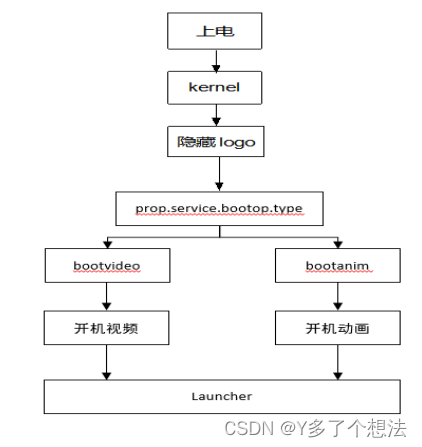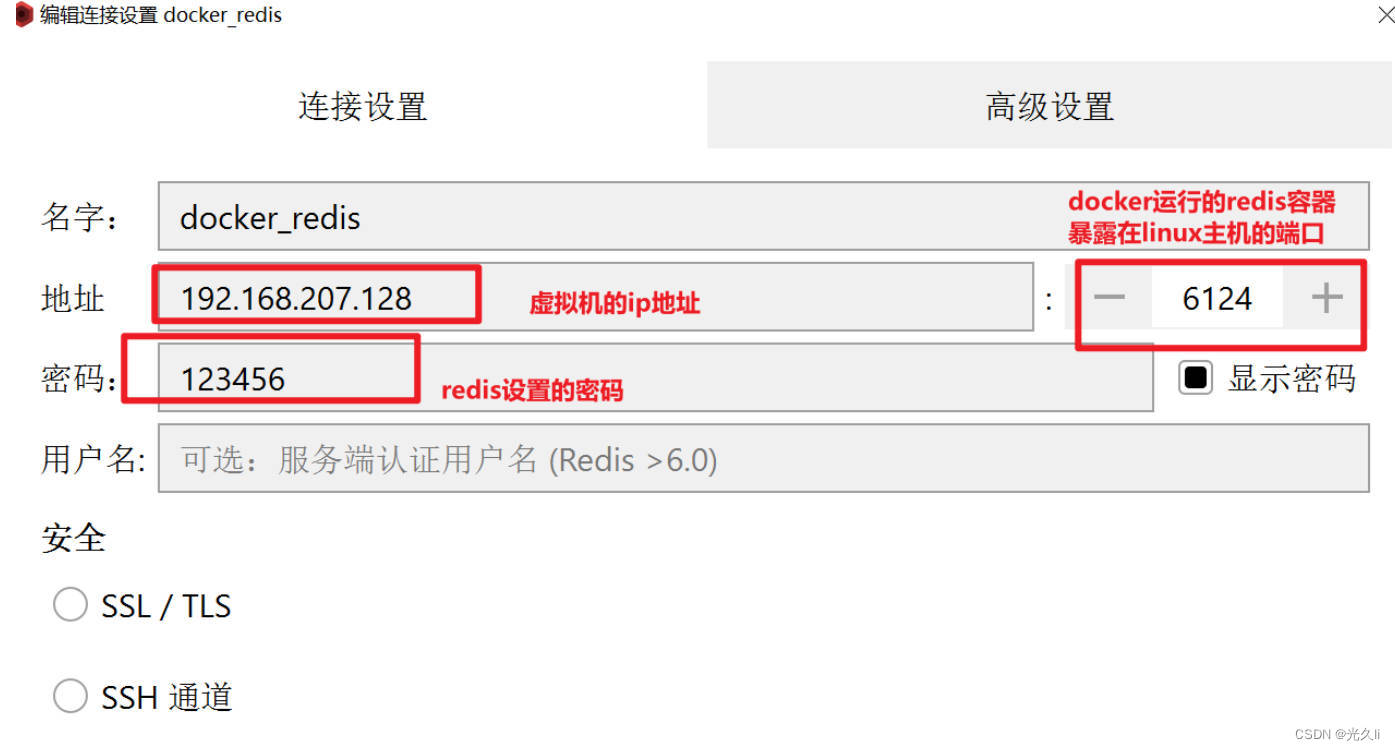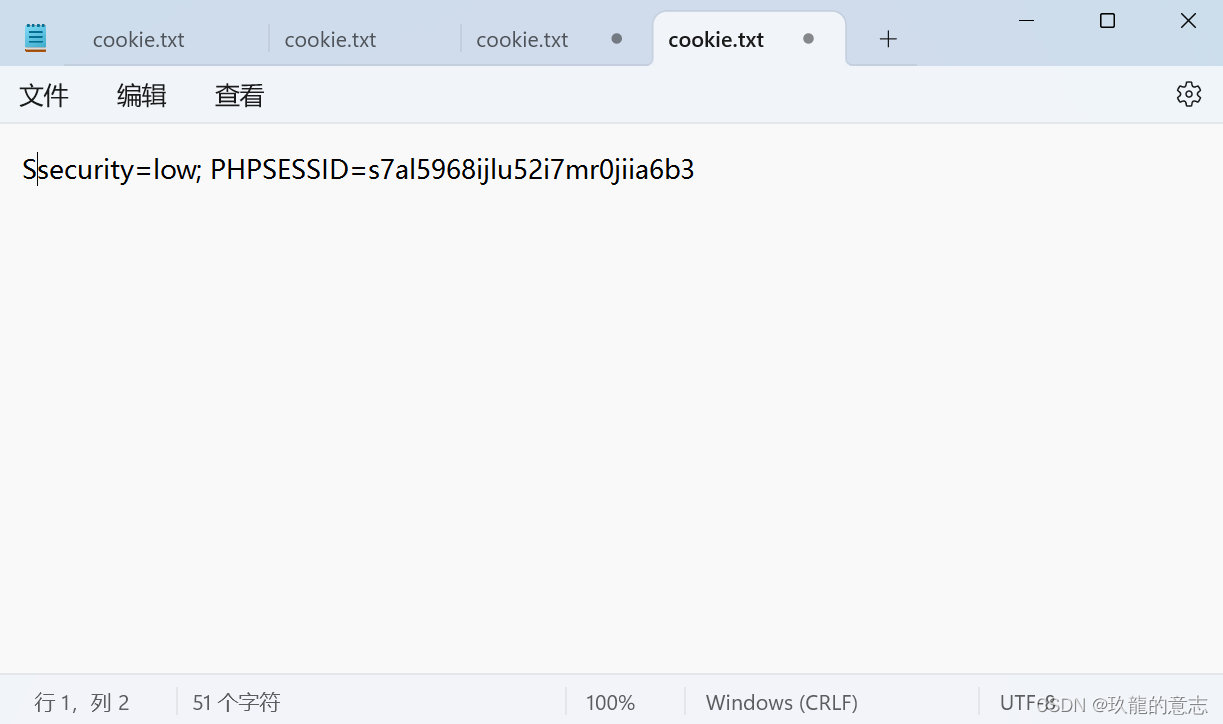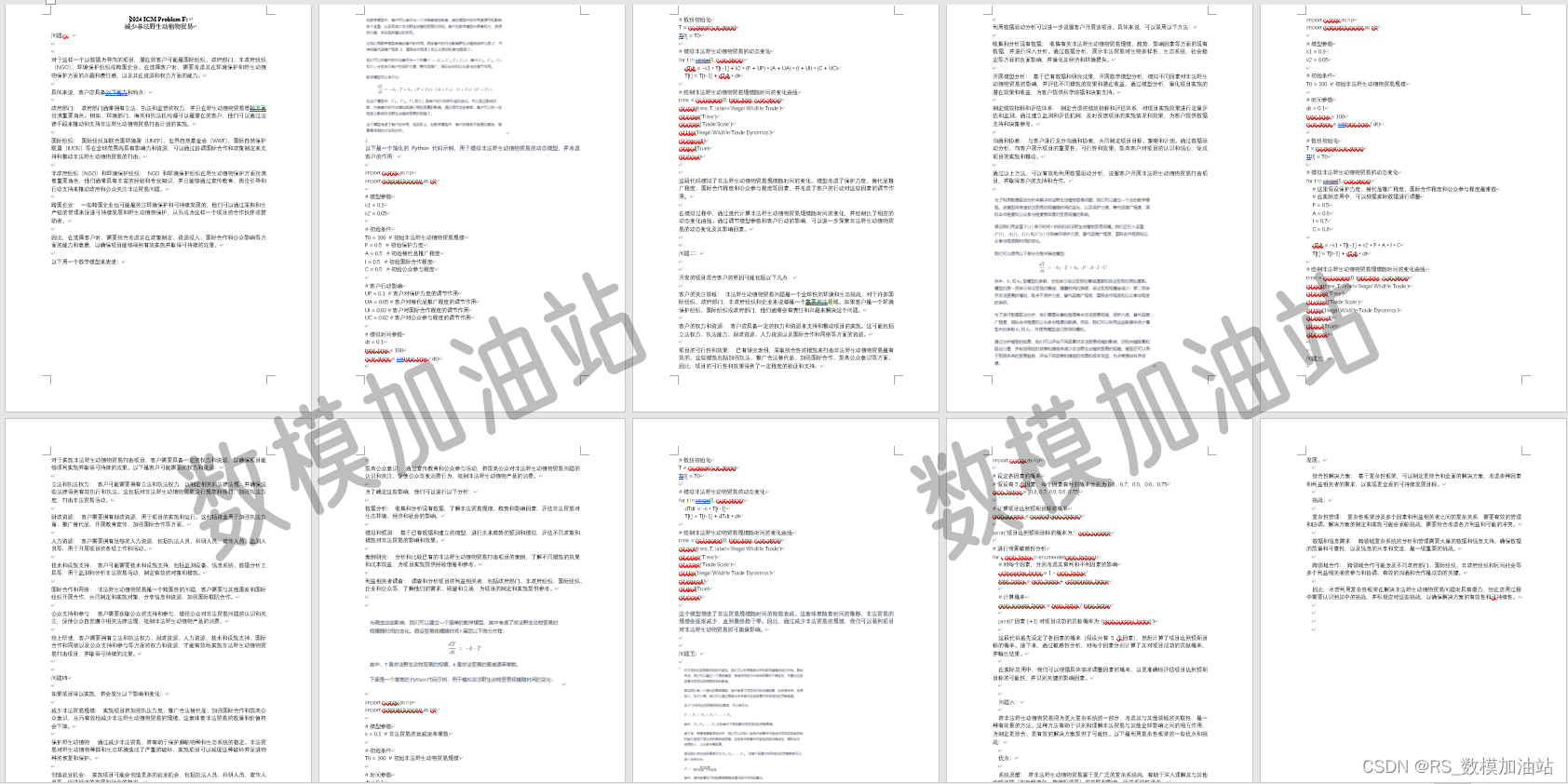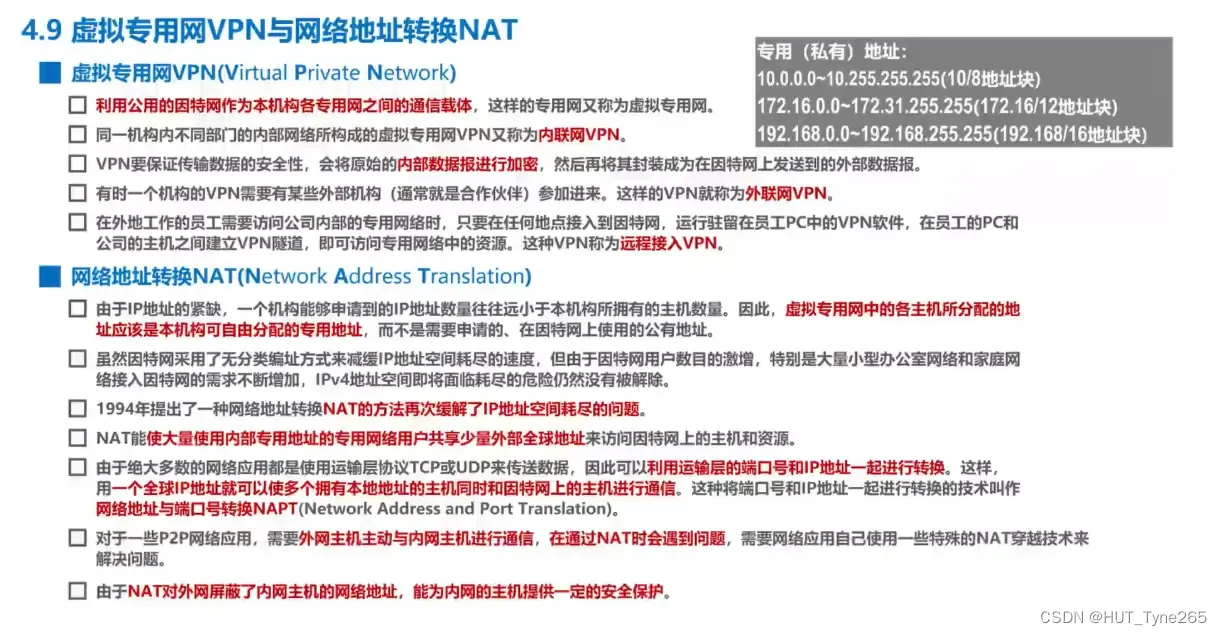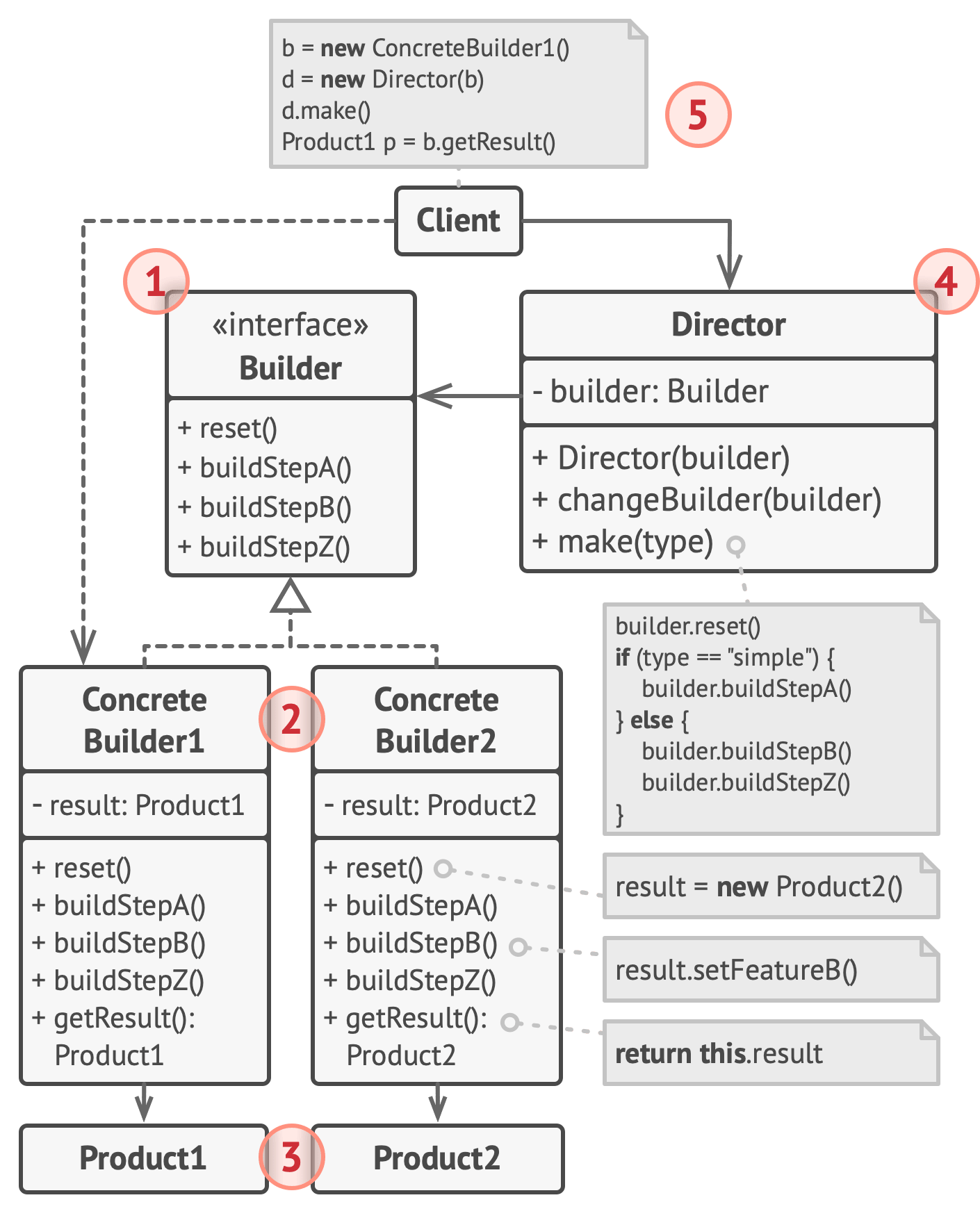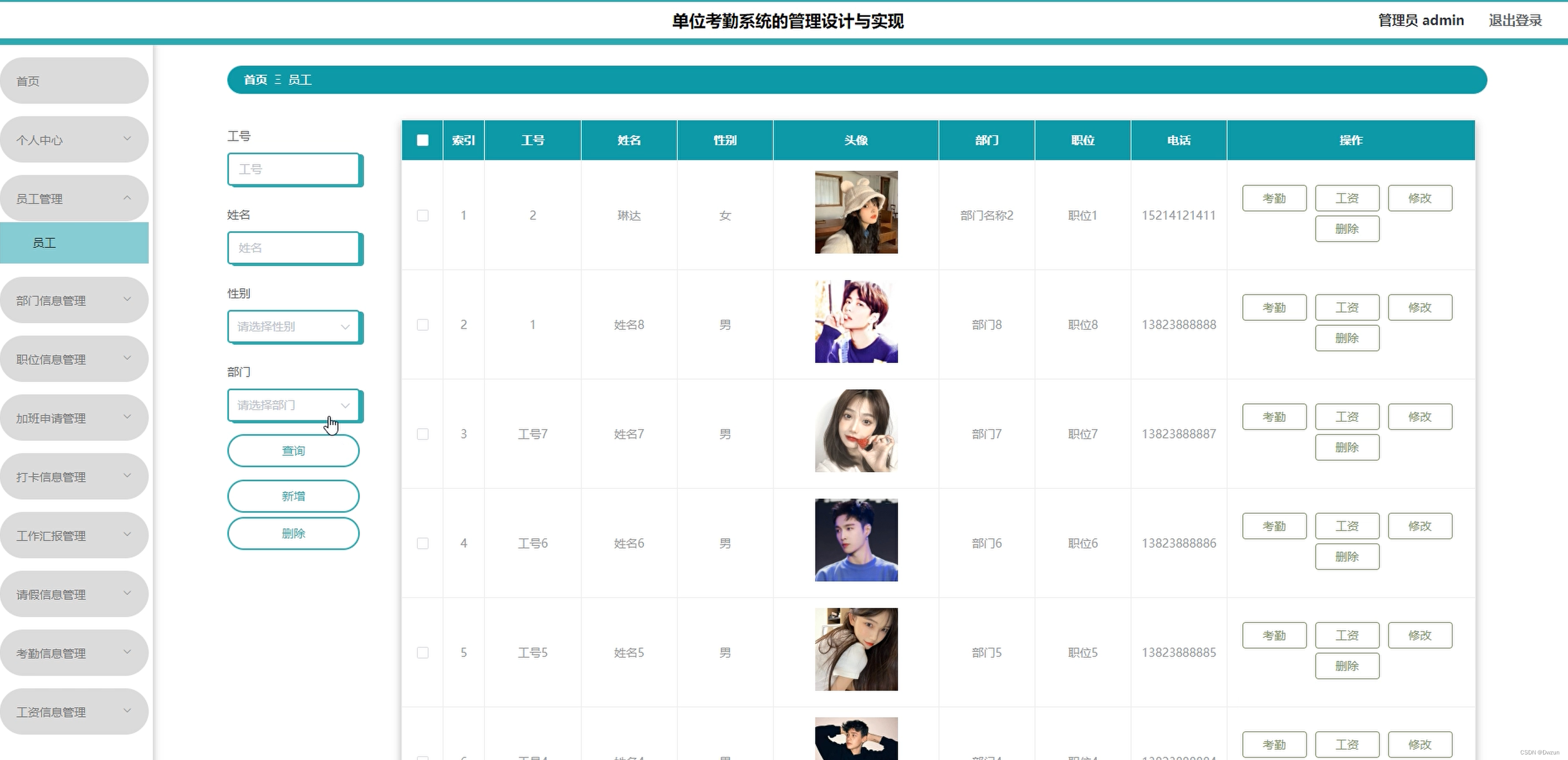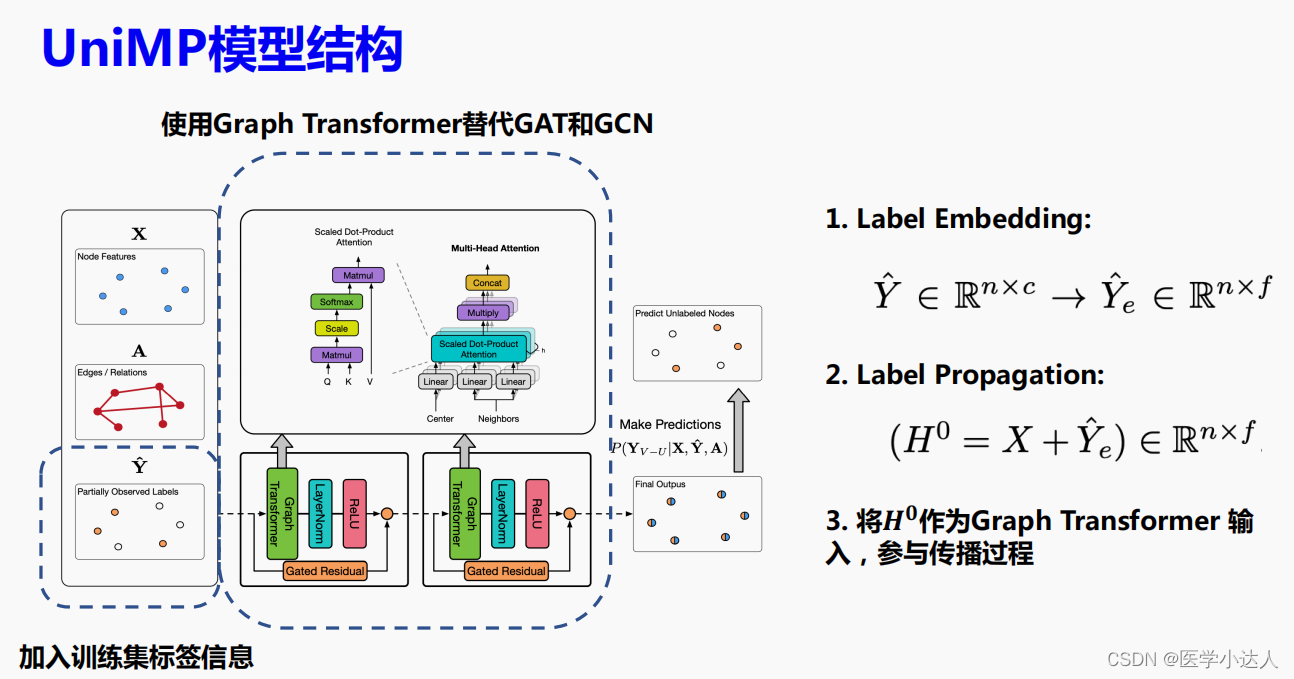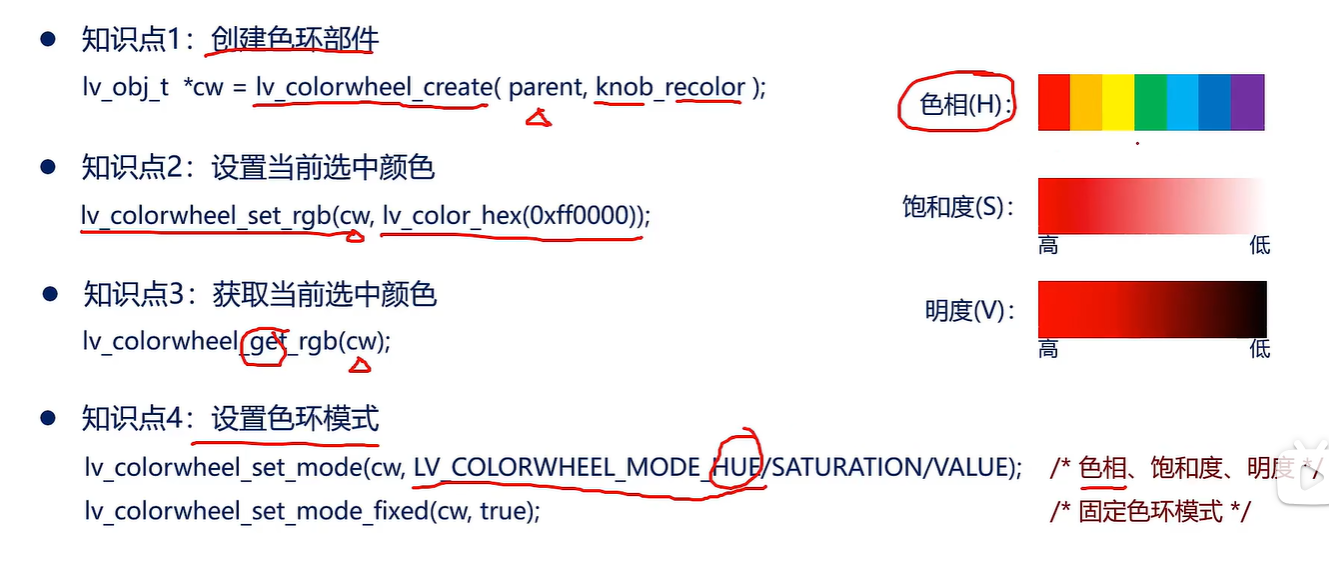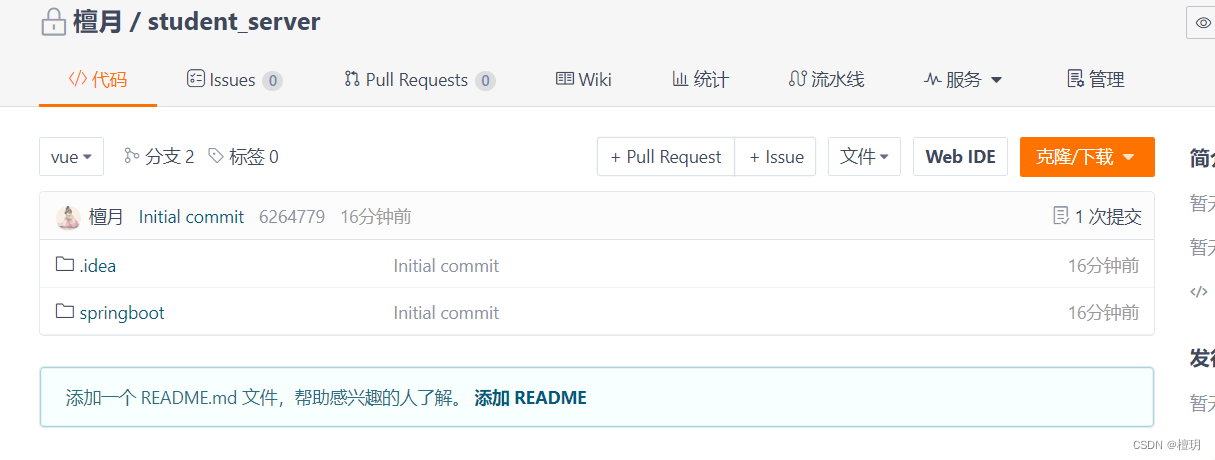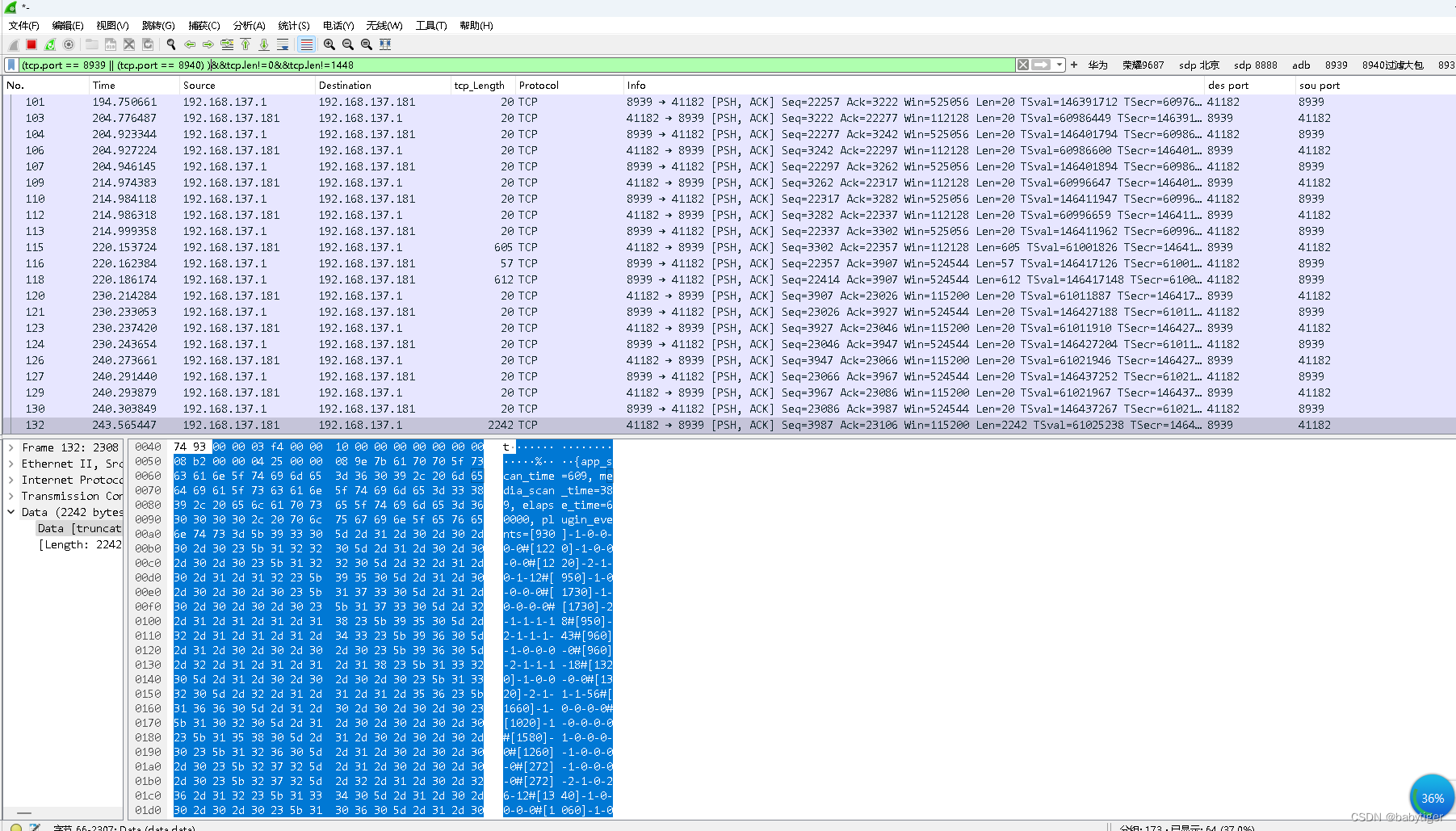一、认识应用状态管理
1.什么是状态管理
在开发中,我们会的应用程序需要处理各种各样的数据,这些数据需要保存在我们应用程序中的某一个位置,对于这些数据的管理我们就称之为是 状态管理。
在前面我们是如何管理自己的状态呢?
- 在Vue开发中,我们使用组件化的开发方式;
- 而在组件中我们定义data或者在setup中返回使用的数据,这些数据我们称之为
state; - 在模块template中我们可以使用这些数据,模块最终会被渲染成 DOM,我们称之为
View; - 在模块中我们会产生一些行为事件,处理这些行为事件时,有可能会修改state,这些行为事件我们称之为
actions;

2.复杂的状态管理
JavaScript开发的应用程序,已经变得越来越复杂了:
- JavaScript需要管理的状态越来越多,越来越复杂;
- 这些状态包括服务器返回的数据、缓存数据、用户操作产生的数据等等;
- 也包括一些UI的状态,比如某些元素是否被选中,是否显示加载动效,当前分页;
当我们的应用遇到多个组件共享状态时,单向数据流的简洁性很容易被破坏:
-
多个视图依赖于同一状态;
-
来自不同视图的行为需要变更同一状态;
我们是否可以通过组件数据的传递来完成呢?
- 对于一些简单的状态,确实可以通过
props的传递或者Provide的方式来共享状态; - 但是对于复杂的状态管理来说,显然单纯通过传递和共享的方式是不足以解决问题的,比如兄弟组件如何共享数据呢?
3.Vuex的状态管理
管理不断变化的state本身是非常困难的:
- 状态之间相互会存在依赖,一个状态的变化会引起另一个状态的变化,View页面也有可能会引起状态的变化;
- 当应用程序复杂时,state在什么时候,因为什么原因而发生了变化,发生了怎么样的变化,会变得非常难以控制和追踪;
因此,我们是否可以考虑将组件的内部状态抽离出来,以一个全局单例的方式来管理呢?
- 在这种模式下,我们的组件树构成了一个巨大的 “试图View”;
- 不管在树的哪个位置,任何组件都能获取状态或者触发行为;
- 通过定义和隔离状态管理中的各个概念,并通过强制性的规则来维护视图和状态间的独立性,我们的代码边会变得更加结构化和易于维护、跟踪;
这就是Vuex背后的基本思想,它借鉴了Flux、Redux、Elm(纯函数语言,redux有借鉴它的思想);
当然,目前Vue官方也在推荐使用Pinia进行状态管理,我们后续也会进行学习。

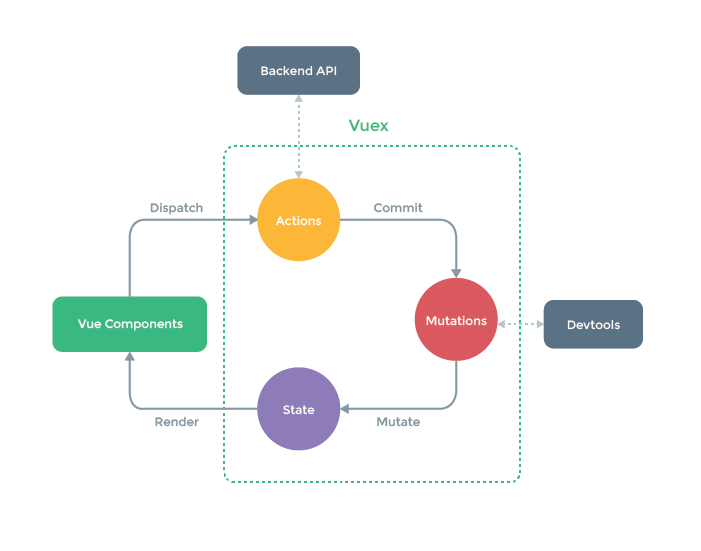
二、Vuex的基本使用
1.Vuex的安装
依然我们要使用vuex,首先第一步需要安装vuex:
- 我们这里使用的是vuex4.x;
npm install vuex
2.创建Store
每一个Vuex应用的核心就是store(仓库):
- store本质上是一个容器,它包含着你的应用中大部分的状态(state);
Vuex和单纯的全局对象有什么区别呢?
第一:Vuex的状态存储是响应式的
- 当Vue组件从store中读取状态的时候,若store中的状态发生变化,那么相应的组件也会被更新;
第二:你不能直接改变store中的状态
-
改变store中的状态的唯一途径就显示提交 (commit)
mutation; -
这样使得我们可以方便的
跟踪每一个状态的变化,从而让我们能够通过一些工具帮助我们更好的管理应用的状态;
使用步骤:
- 创建Store对象;
- 在app中通过插件安装;
store/index.js
import { createStore } from 'vuex'const store = createStore({state: () => ({// 模拟数据// counter: 100,rootCounter: 100,name: "abc",level: 100,avatarURL: "http://xxxxxx",friends: [{ id: 111, name: "why", age: 20 },{ id: 112, name: "kobe", age: 30 },{ id: 113, name: "james", age: 25 }],}),mutations: {increment(state) {state.counter++},changeName(state, payload) {state.name = payload},incrementLevel(state) {state.level++},},
})export default store
App.vue
<template><div class="app"><h2>Home当前计数: {{ $store.state.counter }}</h2><h2>Computed当前计数: {{ storeCounter }}</h2><h2>Setup当前计数: {{ counter }}</h2><button @click="increment">+1</button></div>
</template><script>export default {computed: {storeCounter() {return this.$store.state.counter}}}
</script><script setup>import { toRefs } from 'vue'import { useStore } from 'vuex'const store = useStore()const { counter } = toRefs(store.state)function increment() {// store.state.counter++store.commit("increment")}
</script><style scoped>
</style>
main.js
import { createApp } from 'vue'
import App from './App.vue'
import store from './store'createApp(App).use(store).mount('#app')
3.组件中使用store
在组件中使用store,我们按照如下的方式:
- 在模板中使用;
- 在options api中使用,比如computed;
- 在setup中使用;
4.单一状态树
Vuex 使用单一状态树:
- 用
一个对象就包含了全部的应用层级的状态; - 采用的是SSOT,Single Source of Truth,也可以翻译成单一数据源;
这也意味着,每个应用将仅仅包含一个 store 实例;
- 单状态树和模块化并不冲突,后面我们会讲到module的概念;
单一状态树的优势:
- 如果你的状态信息是保存到多个Store对象中的,那么之后的管理和维护等等都会变得特别困难;
- 所以Vuex也使用了单一状态树来管理应用层级的全部状态;
- 单一状态树能够让我们最直接的方式找到某个状态的片段;
- 而且在之后的维护和调试过程中,也可以非常方便的管理和维护;
三、核心概念State
1.组件获取状态
在前面我们已经学习过如何在组件中获取状态了。
当然,如果觉得那种方式有点繁琐(表达式过长),我们可以使用计算属性:
computed: {counter() {return this.$store.state.counter}
}
但是,如果我们有很多个状态都需要获取话,可以使用mapState的辅助函数:
- mapState的方式一:对象类型;
- mapState的方式二:数组类型;
- 也可以使用展开运算符和来原有的computed混合在一起;
<template><div class="app"><button @click="incrementLevel">修改level</button><!-- 1.在模板中直接使用多个状态 --><h2>name: {{ $store.state.name }}</h2><h2>level: {{ $store.state.level }}</h2><h2>avatar: {{ $store.state.avatarURL }}</h2><!-- 2.计算属性(映射状态: 数组语法) --><!-- <h2>name: {{ name() }}</h2><h2>level: {{ level() }}</h2> --><!-- 3.计算属性(映射状态: 对象语法) --><!-- <h2>name: {{ sName }}</h2><h2>level: {{ sLevel }}</h2> --><!-- 4.setup计算属性(映射状态: 对象语法) --><!-- <h2>name: {{ cName }}</h2><h2>level: {{ cLevel }}</h2> --><!-- 5.setup计算属性(映射状态: 对象语法) --><h2>name: {{ name }}</h2><h2>level: {{ level }}</h2></div>
</template><script>import { mapState } from 'vuex'export default {computed: {fullname() {return "xxx"},// name() {// return this.$store.state.name// },...mapState(["name", "level", "avatarURL"]),...mapState({sName: state => state.name,sLevel: state => state.level})}}
</script>
2.在setup中使用mapState
在setup中如果我们单个获取装是非常简单的:
- 通过useStore拿到store后去获取某个状态即可;
- 但是如果我们需要使用 mapState 的功能呢?
默认情况下,Vuex并没有提供非常方便的使用mapState的方式,这里我们进行了一个函数的封装:
useState.js
import { computed } from 'vue'
import { useStore, mapState } from 'vuex'export default function useState(mapper) {const store = useStore()const stateFnsObj = mapState(mapper)const newState = {}Object.keys(stateFnsObj).forEach(key => {newState[key] = computed(stateFnsObj[key].bind({ $store: store }))})return newState
}
<script setup>import { computed, toRefs } from 'vue'import { mapState, useStore } from 'vuex'import useState from "../hooks/useState"// 1.一步步完成// const { name, level } = mapState(["name", "level"])// const store = useStore()// const cName = computed(name.bind({ $store: store }))// const cLevel = computed(level.bind({ $store: store }))// 2.使用useState// const { name, level } = useState(["name", "level"])// 3.直接对store.state进行解构(推荐)const store = useStore()const { name, level } = toRefs(store.state)function incrementLevel() {store.state.level++}</script><style scoped>
</style>
四、核心概念Getters
1.getters的基本使用
某些属性我们可能需要经过变化后来使用,这个时候可以使用getters:
<template><div class="app"><!-- <button @click="incrementLevel">修改level</button> --><h2>doubleCounter: {{ $store.getters.doubleCounter }}</h2><h2>friendsTotalAge: {{ $store.getters.totalAge }}</h2><h2>message: {{ $store.getters.message }}</h2><!-- 根据id获取某一个朋友的信息 --><h2>id-111的朋友信息: {{ $store.getters.getFriendById(111) }}</h2><h2>id-112的朋友信息: {{ $store.getters.getFriendById(112) }}</h2></div>
</template><script>export default {computed: {}}
</script>
getters: {// 1.基本使用doubleCounter(state) {return state.counter * 2},totalAge(state) {return state.friends.reduce((preValue, item) => {return preValue + item.age}, 0)},// 2.在该getters属性中, 获取其他的gettersmessage(state, getters) {return `name:${state.name} level:${state.level} friendTotalAge:${getters.totalAge}`},// 3.getters是可以返回一个函数的, 调用这个函数可以传入参数(了解)getFriendById(state) {return function(id) {const friend = state.friends.find(item => item.id === id)return friend}}},
2.getters第二个参数
getters可以接收第二个参数:
getters: {totalPrice(state, getters) {return state.price + ", " + getters.myName},myName(state) {return state.name}
}
3.getters的返回函数
getters中的函数本身,可以返回一个函数,那么在使用的地方相当于可以调用这个函数:
getters: {// 3.getters是可以返回一个函数的, 调用这个函数可以传入参数(了解)getFriendById(state) {return function(id) {const friend = state.friends.find(item => item.id === id)return friend}}
}
4.mapGetters的辅助函数
这里我们也可以使用mapGetters的辅助函数。
computed: {...mapGetters(["totalPrice", "myName"]),...mapGetters({finalPrice: "totalPrice",finalName: "myName"})
}
在setup中使用
<template><div class="app"><button @click="changeAge">修改name</button><h2>doubleCounter: {{ doubleCounter }}</h2><h2>friendsTotalAge: {{ totalAge }}</h2><h2>message: {{ message }}</h2><!-- 根据id获取某一个朋友的信息 --><h2>id-111的朋友信息: {{ getFriendById(111) }}</h2><h2>id-112的朋友信息: {{ getFriendById(112) }}</h2></div>
</template><script>import { mapGetters } from 'vuex'export default {computed: {...mapGetters(["doubleCounter", "totalAge"]),...mapGetters(["getFriendById"])}}
</script><script setup>import { computed, toRefs } from 'vue';import { mapGetters, useStore } from 'vuex'const store = useStore()// 1.使用mapGetters// const { message: messageFn } = mapGetters(["message"])// const message = computed(messageFn.bind({ $store: store }))// 2.直接解构, 并且包裹成ref// const { message } = toRefs(store.getters)// 3.针对某一个getters属性使用computedconst message = computed(() => store.getters.message)function changeAge() {store.state.name = "kobe"}</script><style scoped>
</style>
五、核心概念Mutations
1.Mutation基本使用
更改 Vuex 的 store 中的状态的唯一方法是提交 mutation:
mutations: {increment(state){state.counter++}
}
2.Mutation携带数据
很多时候我们在提交mutation的时候,会携带一些数据,这个时候我们可以使用参数:
mutations: {increment(state, payload){state.counter += payload}
}
payload为对象类型
increment(state, payload){state.counter += payload.count
}
对象风格的提交方式
$store.commit({type: "increment",count: 100
})
3.Mutation常量类型
定义常量:mutation-type.js
export const ADD_NUMBER = 'ADD_NUMBER'
定义mutation
mutations: {[ADD_NUMBER](state, payload) {state.counter += payload.count}
}
提交mutation
$store.commit({type: ADD_NUMBER,count: 100
})
4.mapMutations辅助函数
我们也可以借助于辅助函数,帮助我们快速映射到对应的方法中:
methods: {...mapMutations({addNumber: ADD_NUMBER,})...mapMutations(['increment', 'decrement'])
}
5.mutation重要原则
一条重要的原则就是要记住 mutation 必须是同步函数
- 这是因为devtool工具会记录mutation的日记;
- 每一条mutation被记录,devtools都需要捕捉到前一状态和后一状态的快照;
- 但是在mutation中
执行异步操作,就无法追踪到数据的变化;
所以Vuex的重要原则中要求 mutation必须是同步函数;
- 但是如果我们希望在Vuex中发送网络请求的话需要如何操作呢?
六、核心概念Actions
1.actions的基本使用
Action类似于mutation,不同在于:
- Action提交的是mutation,而不是直接变更状态;
- Action可以包含任意异步操作;
这里有一个非常重要的参数context:
- context是一个和store实例均有相同方法和属性的context对象;
- 所以我们可以从其中获取到commit方法来提交一个mutation,或者通过 context.state 和 context.getters 来获取 state 和 getters;
但是为什么它不是store对象呢?这个等到我们讲Modules时再具体来说;
mutations: {increment(state) {state.counter++}
},
actions: {increment(context) {context.commit('increment')}
}
2.actions的分发操作
如何使用action呢?进行action的分发:
- 分发使用的是 store 上的dispatch函数;
add() {this.$store.dispatch('increment')
}
同样的,它也可以携带我们的参数:
add() {this.$store.dispatch('increment', { counter: 100 })
}
也可以以对象的形式进行分发:
add() {this.$store.dispatch({type: 'increment',counter: 100})
}
3.actions的辅助函数
action也有对应的辅助函数:
对象类型的写法;数组类型的写法;
methods: {...mapActions(['increment', 'decrement']),...mapActions({add: 'increment',sub: 'decrement'})
}
4.actions的异步操作
Action 通常是异步的,那么如何知道 action 什么时候结束呢?
- 我们可以通过让action返回Promise,在Promise的then中来处理完成后的操作;
actions: {increment(context) {return new Promise((resolve) => {setTimeout(() => {context.commit('increment')resolve('一步完成')}, 1000)})}
}
const store = useStore()
const increment = () => {store.dispatch('increment').then(res => {console.log(res, '异步完成')})
}
七、核心概念Modules
1.module的基本使用
什么是Module?
- 由于使用单一状态树,应用的所有状态会集中到一个比较大的对象,当应用变得非常复杂时,store 对象就有可能变得相当臃肿;
- 为了解决以上问题,Vuex 允许我们将 store 分割成模块(module);
- 每个模块拥有自己的 state、mutation、action、getter、甚至是
嵌套子模块;
const moduleA = {state: () => ({}),mutations: {},actions: {},getters: {}
}
const moduleB = {state: () => ({}),mutations: {},actions: {},
}
const store = createStore({modules: {a: moduleA,b: moduleB}
})
store.state.a // moduleA 模块的状态
2.module的局部状态
对于模块内部的 mutation 和 getter,接收的第一个参数是模块的局部状态对象:
mutations: {changeName(state) {state.name = '111'}
},
getters: {info(state, getters, rootState) {}
},
actions: {changeNameAction({state, commit, rootState}) {}
}
3.module的命名空间
默认情况下,模块内部的action和mutation仍然是注册在全局的命名空间中的:
- 这样使得多个模块能够对同一个 action 或 mutation 作出响应;
- Getter 同样也默认注册在全局命名空间;
如果我们希望模块具有更高的封装度和复用性,可以添加 namespaced: true 的方式使其成为带命名空间的模块:
- 当模块被注册后,它的所有 getter、action 及 mutation 都会自动根据模块注册的路径调整命名;
const moduleA = {namespaced: true,// 访问:$store.state.模块名.xxxstate() {return {name: 'abc',age: 18}},mutations: {// 访问: $store.commit('模块名/changeName')changeName(state) {state.name = 'zhangsan'}},getters: {// 访问:$store.getters['模块名/info']// 这里又4个参数info(state, getters, rootState, rootGetters) {}},actions: {// 这里有六个参数changeNameAction({commit, dispatch, state, rootState, getters, rootGetters}) {commit('changeName', 'kobe')}}
}4.module修改或派发根组件
如果我们希望在action中修改root中的state,那么有如下的方式:
changeNameAction({commit, dispatch, state, rootState, getters, rootGetters}) {commit('changeName', 'kobe')commit('changeRootName', null, {root: true}),dispatch('changeRootNameAction', null, {root: true})
}
